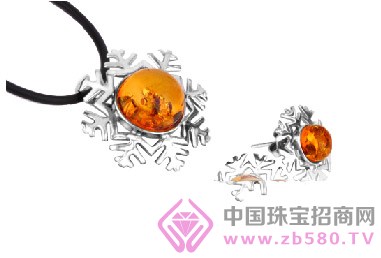Amber is a resin dripping from the coniferous plant of 45-65 million years ago. It was buried in the underground for thousands of years and formed by petrochemicals under the influence of pressure and heat. It is also called "resin fossil" or "rosin fossil". . Amber is very delicate, afraid of fire, afraid of gasoline, afraid of knocking, afraid of exposure. Some amber also has aroma. Common amber species: Jinpo, Jin Lanpo, green tea, black tea, blood, cypress, flower, brown, red, blue, green, insect, beeswagen, pegan, Myanmar roots and so on. There are a lot of fakes in amber, so be sure to distinguish them when you buy them. Jiale Amber will bring you some methods to suppress the amber. I hope to help everyone!

First, press amber
Due to the different solidification time of the resin, delamination may be formed, and there is a clear boundary between the layers. This amber is brittle, fragile and difficult to engrave. Therefore, when processing the amber, it is necessary to perform heating and pressure treatment, so that the interface between the boundary lines is re-fused and solidified. The identification features are somewhat similar to those of reconstituted amber, but the solidified amber has a clear dividing line and a flowing reddish brown grain. Compressed amber is a natural layered amber, and reconstituted amber is amber crumb, which is essentially different.
(1) Block pressure. (especially with large pieces of raw wax, it is difficult to distinguish, and there are many on the market)
Pressing the boundaries between different blocks of amber.
Pressing the boundaries and impurities between different blocks of amber.
Press the different amber of amber.
The difference between yellowish brown silk and plaque is the boundary of the pressed amber.
(2) Powder pressure.
Second, heat treatment
The main purpose of amber heat treatment is to increase the transparency of the amber block, hide its inner flaws, change the color to achieve the desired color, or even the color to achieve a certain visual effect, resulting in a "sun flower." But these flowers not only do not affect the quality of amber, but also increase the beauty of amber, sparkling under the illumination of light. This is a process that accelerates its internal purification, similar to what happens in the natural environment. So far, the national standard of China's jewelry industry stipulates that heat-treated amber is optimized because the material composition of amber itself is not brought in and out, and can be sold as a natural gemstone without any explanation.
Third, baking color processing
It mimics the natural oxidation process of nature, the imitation of aging amber, which turns the color of the amber surface red. Still belongs to optimization. Take a few photos of the baking color and the original color of the new beeswax:
Fourth, the pressure treatment
The opaque amber material is pressurized and heated to cause the internal bubbles to overflow and become clear and transparent. This method is still an optimization. The green beeswax on the market is mainly Jinpo and pearl honey, and most of the Jinpo is processed by pressing.

Five, dyeing treatment
Dyeing is to mimic aging amber. Also dyed in green or other colors. Dyeing is a treatment, and the price of dyed amber is cheaper than that of natural dyeing.
Reconstituted amber
Since some natural small pieces of amber cannot be processed into jewelry, in order to utilize these natural small pieces of amber, these small pieces of amber are sintered at a certain temperature and pressure to form a larger piece of amber, which is called reconstituted amber. It is said to press amber, melt amber or mold amber. In order to ensure the purity and high transparency of amber, amber should be purified first. Other organic substances such as fuels, flavors, and binders may also be added during the pressing process. At present, this process is carried out in a high-pressure furnace. The method of optimizing the treatment with a high-pressure furnace has done something that could not be done in the past, for example, a completely seamless combination of two natural ambers can be achieved. The amber pieces made by this method are completely invisible and they are stuck together. Reconstituted amber has the following characteristics:
(a) Reconstituted amber often contains oriented elongated elongated bubbles and a distinct flow structure or syrup agitated configuration. A darker surface oxide layer is visible between the amber particles, sometimes containing unmelted material. The bubbles in natural amber are round and contain animal and plant debris.
(2) Magnification observation, reconstituted amber has a granular structure or a "blood-like" structure, and on the polished surface, it can be seen that the hardness is different and the unevenness is exhibited.
(3) Under short-wave ultraviolet rays, reconstituted amber is stronger than natural amber, and amber is regenerated into bright white-like blue fluorescence, which is found to have a granular structure due to uneven fluorescence.
Seven, film treatment
There are two main types of coating treatment, one is to apply a color film on the bottom of amber, in order to improve the three-dimensional feeling of "sun flower" in light amber; the other is to spray a layer of varnish on the surface of amber to pretend different shades. Red blood, gold, and so on. The identification feature is that there is no transition color between the painted color layer and the original amber, and the color of the amber surface of the film is shallow, as long as it is noticeable.
Laminating treatment is a common type of optimized treatment of amber. The film is applied to the bottom or surface of the sample evenly by adjusting the pre-adjusted colored or colorless paint (glue) to protect and highlight the appearance of the sample and to function as an old amber. In addition to increasing the transparency of the sample and increasing the weight of the sample, it is well known that amber jewelry is sold by weight, and increasing the weight is also increasing its value.
The surface coating, also called injection, is a colorless, transparent, varnish that solidifies after drying. Because amber polishing differs from others, such as engravings, many details of the groove details are difficult to polish and brighten, so this method is used in the industry instead of polishing, and it can also play a bright role. Called fuel injection. Very light ~ such as a kilogram of amber carving after the injection of oil, the weight is generally only increased by about 2 grams.
In 1998, the owner of CAROL felt the elegance, fashion and inspirational imagination from the sea breeze of the Baltic Sea. At the same time, it was attracted by the charming color and delicate temperament of amber, so the brand of Jiale CAROL was born.
Since then, Jiale's designers have continuously blended romance and inspiration, blending fashion elements with artistic atmosphere, and almost perfectly created a brand image that represents elegance, fashion and romance, and continues to be recognized by customers and peers. .
Amber, the ancient fossil of Jiale amber, which is called “organic treasure†by the world, is not only beautiful in appearance, but also condenses the mysterious energy of thousands of years. She does not have the luxury of gold, the eye-catching platinum, and the dazzling luster of diamonds, adorned in the chest, under the ears, wrists, neck, but not arbitrarily, quietly lining your taste, fashion and elegance.
Seim-Dull Fdy Sd,Recycle Yarn Jiabao,Fully Drawn Yarn,Seim-Dull Fdy Sd Yarn
Zhejiang Jiabao Polyester Co.,ltd. , https://www.jiabaorecycle.com
